Table of Contents
The Best Natural Ingredients for Skin: Essential Guide for All Types
This page may contain affiliate links. We may earn a commission on purchases, at no additional cost to you. Learn more →
When searching for skin care, you’re often met with many synthetics. Have you ever picked up a skincare product, read the ingredient list, and felt completely lost? I've been there too – staring at labels filled with unpronounceable chemicals, wondering if they're actually helping or hurting my skin.
Here's what makes this frustrating: many conventional skincare products contain synthetic ingredients that can irritate sensitive skin, disrupt your skin's natural balance, or even cause long-term health concerns. And the worst part? You might not even realize it's happening until your skin starts reacting – redness, breakouts, dryness, or that tight, uncomfortable feeling that tells you something's wrong.
Here's the good news: Natural skin care ingredients – derived from plants, minerals, and botanical sources – offer a gentler, science-backed path to healthy skin. Nearly 60% of consumers now prefer natural or organic skincare products, and research increasingly validates their effectiveness. From tea tree oil matching benzoyl peroxide's acne-fighting power with fewer side effects to Manuka honey receiving FDA approval for wound healing, natural ingredients are proving they belong in serious skincare routines.
In this guide, I'll walk you through everything I've learned about natural skin care ingredients – what actually works, what's just marketing hype, and how to build a routine that works for your specific skin type and concerns. Whether you're dealing with acne, aging, dryness, or sensitivity, you'll discover which plant-powered ingredients can transform your complexion – and exactly how to use them safely.

Key Takeaways
Before we dive deep, here's what you need to know about natural skincare ingredients:
-
Science Backs Natural Ingredients: Research validates that many plant-powered ingredients deliver real results. Tea tree oil matches benzoyl peroxide's acne-fighting power, Manuka honey has FDA approval for wound healing, and bakuchiol reduces wrinkles comparably to retinol – all with fewer side effects than their synthetic counterparts.
-
Natural ≠ Automatically Safe: Just because something comes from nature doesn't mean it can't irritate your skin or cause allergic reactions. Essential oils can burn if used undiluted, lemon juice can cause hyperpigmentation, and even chamomile can trigger reactions in people with ragweed allergies. Respect nature's power.
-
Choose Based on Your Specific Needs: The "best" natural ingredient depends entirely on your skin type and concerns. Oily, acne-prone skin thrives with tea tree oil and niacinamide. Dry skin needs aloe vera and shea butter. Aging skin benefits from vitamin C and bakuchiol. There's no one-size-fits-all solution.
-
The Regulatory Gap Matters: The EU bans over 1,300 cosmetic chemicals while the U.S. FDA bans only a dozen. This disparity means you need to be your own advocate, researching ingredients and choosing products from transparent, reputable brands.
-
Holistic Approach Works Best: Even the best natural ingredients can't overcome poor lifestyle habits. Combining quality natural skincare with adequate sleep, stress management, a nutrient-rich diet, and daily sun protection delivers the most dramatic results. I've seen this in my own skin journey – the transformation comes from inside-out care.
What Does “Natural” Really Mean in Skin Care?
Let's cut through the confusion. Walk into any beauty store and you'll see "natural," "organic," and "clean" splashed across labels. But what do these terms actually mean for your skin?
Natural vs. Organic vs. Clean: Definitions and Misconceptions
-
Natural skin care involves using ingredients available in nature – botanical extracts, plant-based oils, essential oils, minerals. Generally, it refers to ingredients derived from plants, minerals, or animal by-products with minimal processing. Think aloe vera gel straight from the leaf, cold-pressed jojoba oil, or raw honey from the hive.
But here's the catch: "natural" has no official FDA definition. Brands can use this term pretty loosely, which means you need to be a savvy reader.
-
Organic skin care is different. These ingredients must be cultivated without synthetic pesticides or chemical fertilizers and processed with minimal interference. Almost 40% of U.S. consumers believe organic personal care products are healthier than conventional ones. For a product to be USDA Organic certified, it needs ≥95% organic ingredients.
I used to use "natural" and "organic" interchangeably until I learned the difference. Natural means the source is from nature; organic means how it was grown and processed. A coconut oil can be natural but not organic if the coconuts were conventionally farmed with pesticides.
-
Clean products eliminate toxic chemicals and substances linked to health concerns – things like formaldehyde, parabens, and phthalates. Clean formulations could be natural, synthetic, or a combination. The focus is on safety rather than origin.
The key insight? These terms overlap but aren't synonyms. You can have natural ingredients that aren't organic, organic ingredients that aren't "clean" (if contaminated during processing), and clean synthetic ingredients that work beautifully.
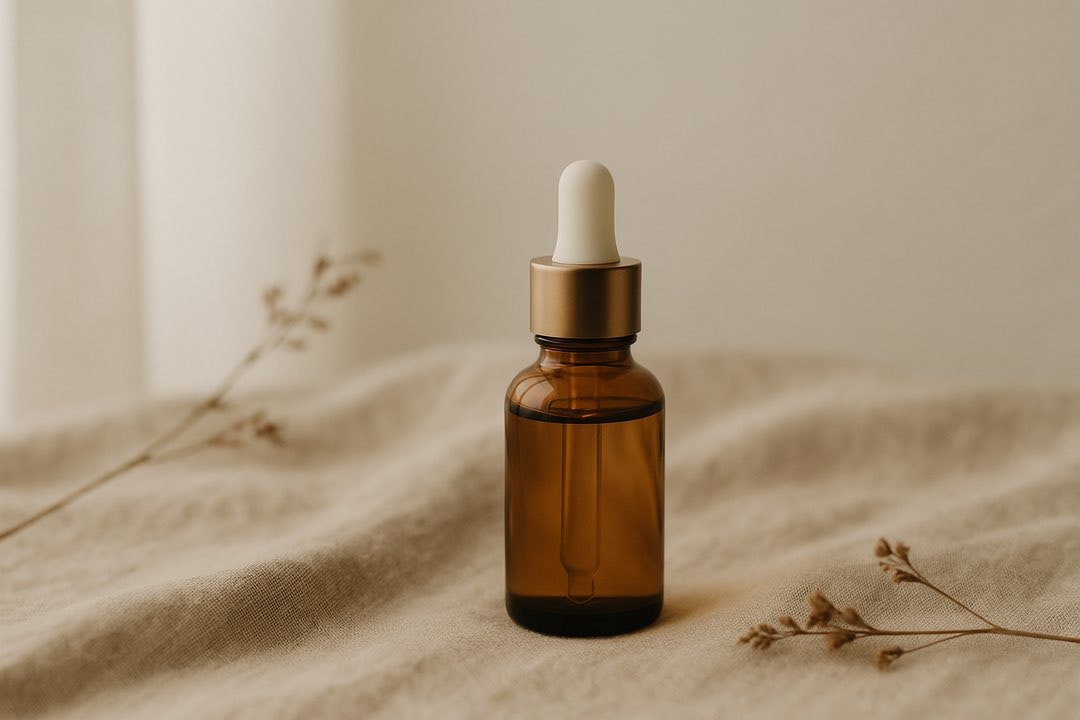
Are Natural Products Safer?
Natural doesn't automatically mean safe or effective. This is crucial to understand.
While natural products are generally gentler, they can still cause side effects. For example, cypress oil is a natural essential oil that may minimize skin's oily appearance, but it can also trigger allergic reactions. Pure lemon oil is natural yet can cause chemical burns or hyperpigmentation when applied to skin and exposed to sunlight.
Witch hazel is a plant extract that can reduce inflammation, but if distilled with alcohol, it may over-dry or irritate skin. The same forest where healing herbs grow also houses poisonous plants and venomous creatures. Nature isn't inherently safe – it's powerful, which demands respect.
Not all natural ingredients have been properly studied, and not all synthetic ingredients are harmful.
Here's a critical safety issue many people overlook: Natural products, especially DIY formulations, often lack preservatives. While this sounds appealing (who wants chemicals in their skincare?), it creates a serious risk.
Without preservatives, natural products become breeding grounds for mold, bacteria, and fungi – sometimes within days. Fresh is key with preservative-free natural products. If you're mixing aloe vera gel or creating a honey mask, make only what you'll use immediately. Store any leftovers in the refrigerator and use within 2-3 days maximum. Watch for signs of spoilage: changes in color, smell, texture, or visible mold. When in doubt, throw it out.
Natural facial oils can also go rancid over time, especially those high in polyunsaturated fats (like rosehip oil or flaxseed oil). Rancid oils smell off, change color, and can actually damage your skin rather than nourish it. Store oils in cool, dark places and use within their shelf life (typically 6-12 months after opening for most natural oils).
This is why many commercial "natural" products do contain some preservatives – and that's okay. It keeps them safe to use. The key is choosing preservatives that are well-studied and considered safe, not avoiding all preservation entirely.
The bottom line: Be vigilant about what products you're using, regardless of whether they're labeled natural. Look for ingredients with research backing their safety and efficacy. And if you're making DIY products, treat them like fresh food – use immediately or refrigerate, and discard at the first sign of spoilage.
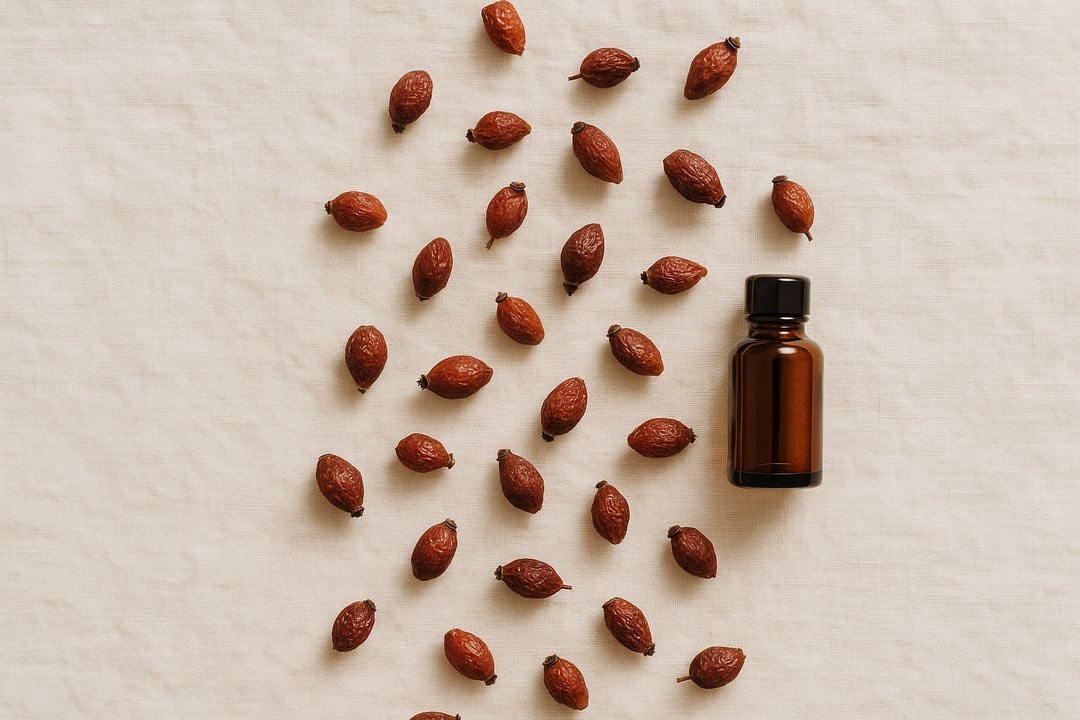
The Best Natural Skin Care Ingredients and How They Benefit Your Skin
Let me walk you through the most effective natural ingredients organized by skin type and concern. I've personally tested many of these, and the science backs up what I've experienced.
Dry and Dehydrated Skin
If your skin feels tight, flaky, or rough, you need ingredients that deeply hydrate and strengthen your skin barrier.
-
Hyaluronic Acid (from botanical sources) This moisture magnet can hold up to 1,000 times its weight in water. While often synthetically produced, hyaluronic acid can be derived from plant sources like marshmallow root or wheat. It's a humectant that draws moisture from the environment into your skin, plumping fine lines and creating a dewy appearance.
I apply hyaluronic acid serum to damp skin (this is crucial – it needs water to bind to), then seal it with an oil or moisturizer. The difference in my skin's hydration is noticeable within hours.
-
Coconut Oil Extra virgin coconut oil significantly improves skin hydration and strengthens the skin barrier, making it better at resisting irritants. In patients with atopic dermatitis, applying coconut oil for 8 weeks led to 68% improvement in skin hydration and significant reduction in eczema severity.
However, here's my caution: coconut oil ranks moderately high (4 out of 5) on the comedogenic scale. For facial use, I only recommend it if you have very dry, non-acne-prone skin. It's fantastic for body moisturizing – I use it on my legs and arms after showering, especially in winter.
-
Shea Butter Rich in triglycerides and fatty acids (oleic, stearic acids), shea butter both moisturizes and has anti-inflammatory properties. Regular use restores lipids in your skin barrier, preventing water loss. Despite being thick, it's surprisingly non-comedogenic (rating ~0-1), so it typically won't clog pores.
I keep unrefined shea butter in my bathroom and massage it into knees, elbows, and feet while skin is still damp from showering. This locks in hydration beautifully.
-
Aloe Vera The ultimate soothing hydrator. Aloe vera gel contains compounds that fight bacteria and reduce skin inflammation, redness, and itching. Studies on burn patients show topical aloe reduced healing time compared to conventional treatments. It's packed with polysaccharides and antioxidants that hydrate skin and may stimulate collagen production.
I keep a pure aloe vera gel (100% from the plant) in my fridge. After sun exposure or when my skin feels irritated, I apply a thin layer. It's cooling, calming, and absorbs without residue.
-
Jojoba Oil Here's something fascinating: jojoba oil's molecular structure closely resembles human sebum. This makes it uniquely suited for all skin types, including dry skin. It provides lightweight hydration without heaviness and helps repair the skin barrier. Studies show it accelerates wound closure and improves skin suppleness.
I use a few drops of pure jojoba oil as a final step in my evening routine. It absorbs quickly and leaves my skin soft without greasiness.
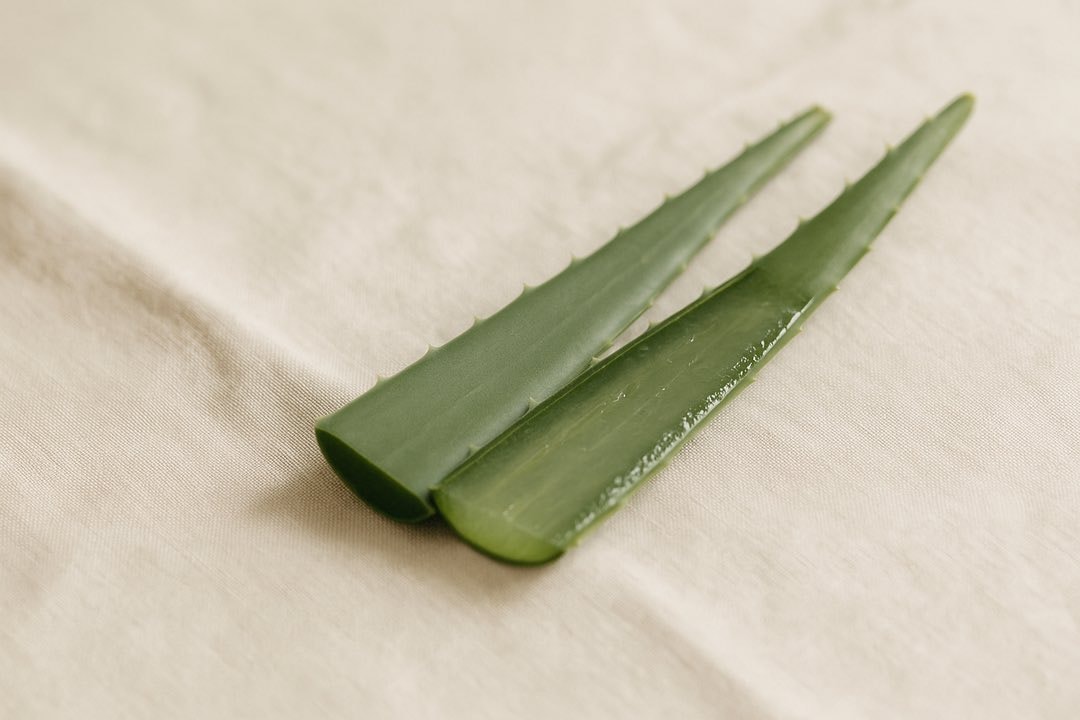
Oily and Acne-Prone Skin
Contrary to popular belief, oily skin still needs hydration – just the right kind. These ingredients balance oil production and fight acne without over-drying.
-
Tea Tree Oil A landmark clinical trial found 5% tea tree oil gel was as effective as 5% benzoyl peroxide in reducing acne lesions over 8 weeks – but with fewer side effects like dryness and peeling. Tea tree oil kills acne-causing bacteria and reduces inflammation naturally.
Here's my method: I never use tea tree oil undiluted (it can cause irritation or blistering). I dilute 1-2 drops in a teaspoon of jojoba oil and apply to blemishes with a Q-tip before bed. Within a few days, I notice reduced redness and faster healing.
-
Green Tea Extract Rich in polyphenols (especially EGCG), green tea has antimicrobial effects on P. acnes bacteria and helps regulate sebum. A small study found a 2% green tea lotion reduced acne lesions by 58% over 6 weeks.
I use serums with green tea extract in the morning before sunscreen. Beyond acne benefits, it provides antioxidant protection against UV and pollution damage.
-
Witch Hazel As a natural astringent and anti-inflammatory, witch hazel helps dry out active pimples and refine pore appearance. A study published in Journal of Drugs in Dermatology noted witch hazel formulation exhibited potent anti-inflammatory effects and improved skin barrier function.
The key is using alcohol-free witch hazel (brands like Thayers). After cleansing, I swipe it across oily areas with a cotton pad. It removes excess oil without stripping skin.
-
Niacinamide (Vitamin B3) While often synthetically made, niacinamide can be derived from natural sources like yeast. It's excellent for acne – it reduces inflammation, regulates oil production, and improves acne marks. A clinical study showed 4% niacinamide gel was as effective as 1% clindamycin antibiotic gel for acne, significantly reducing blemishes in 8 weeks.
I use a niacinamide serum daily. It's gentle enough to use with other actives and has transformed my skin's texture and tone.
-
Jojoba Oil (yes, again!) Because jojoba mimics human sebum, when applied to skin it can "trick" oil glands into thinking they've produced enough oil, potentially reducing overactive sebum production. Paradoxically useful for oily skin – it regulates without clogging. I use it for oil cleansing: massage a teaspoon onto dry face, then wipe with a warm damp cloth to dissolve sebum plugs.
Sensitive and Irritated Skin
When your skin is reactive, red, or easily irritated, these gentle ingredients calm inflammation and strengthen your protective barrier.
-
Colloidal Oatmeal This finely ground oat has official FDA recognition as a skin protectant. Clinical studies show colloidal oatmeal baths or creams relieve eczema symptoms like itching, redness, and dryness significantly better than placebo. Avenanthramides in oats inhibit inflammation pathways and even have antihistamine effects, helping quell itch.
When I have an eczema flare, I grind plain oats to fine powder and add to a warm bath. Soaking for 15 minutes provides instant relief. The National Eczema Association gives colloidal oatmeal products its Seal of Acceptance – that's powerful validation.
-
Chamomile Extract Containing α-bisabolol and flavonoids like apigenin, chamomile directly reduces inflammation in skin. A trial comparing chamomile cream to 0.5% hydrocortisone in eczema found chamomile was moderately effective in reducing dermatitis – without steroid side effects.
I brew pure chamomile tea, cool it, and use it as a soothing face rinse. For irritated areas, I soak cotton pads in cold chamomile tea and lay them on my face for 5-10 minutes.
-
Aloe Vera (therapeutic for sensitivity too) Beyond hydration, aloe's anti-inflammatory compounds make it perfect for sensitive skin. One dermatologist notes aloe "has been used to treat skin diseases for centuries" with an excellent safety profile. It's my go-to after any procedure or when my skin feels compromised.
-
Calendula (Marigold) Extract This gentle flower extract has anti-inflammatory and wound-healing properties. It's incredibly soothing for reactive skin, rashes, and minor irritations. I look for creams with calendula when my skin barrier feels weakened.
-
Centella Asiatica (Cica) This herb used in traditional Eastern medicine became a global phenomenon for calming sensitive skin. It's now found in countless "cica creams" for redness and compromised skin. The madecassoside compound in centella helps repair and strengthen skin barrier.
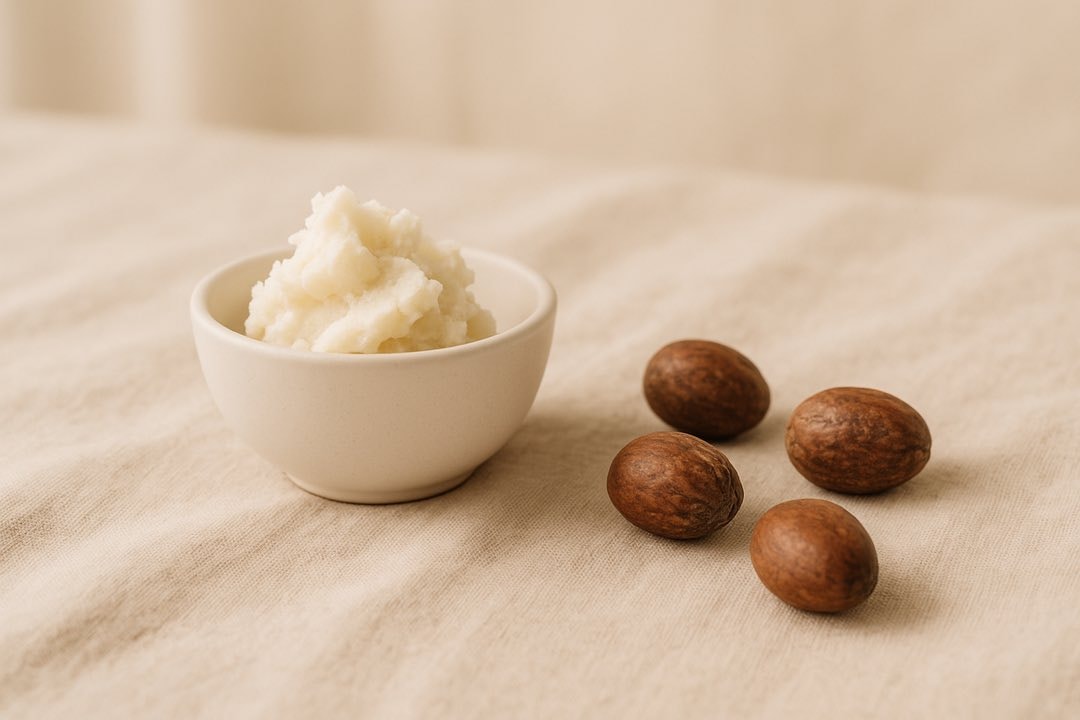
Aging and Sun-Damaged Skin
To address fine lines, wrinkles, dark spots, and loss of firmness, these ingredients stimulate collagen and repair damage.
-
Vitamin C (especially from Kakadu Plum) Vitamin C is a powerhouse for brightening and collagen production. Natural sources like Kakadu plum contain up to 100× more vitamin C than oranges. A landmark review confirmed vitamin C's role in stimulating collagen formation and reducing UV photodamage. Clinical trials show topical vitamin C (5-10%) applied for 12 weeks significantly improves fine lines, wrinkles, and skin texture.
I apply a 15% vitamin C serum every morning after cleansing, then follow with sunscreen. When used under sunscreen, vitamin C can reduce UVB-induced redness by ~52% – that's synergistic protection.
-
Bakuchiol This natural compound from Babchi plant is gaining fame as a "natural retinol alternative." A landmark 2018 study in British Journal of Dermatology compared 0.5% bakuchiol to 0.5% retinol in 44 patients over 12 weeks. Both groups saw significant improvement in wrinkles, firmness, and hyperpigmentation – with no statistical difference. However, retinol users reported more scaling and stinging; bakuchiol users had fewer side effects.
I use bakuchiol serum twice daily. Unlike retinol, I don't experience peeling or increased sun sensitivity. After 10 weeks, I noticed visible improvement in my skin tone and texture.
-
Rosehip Seed Oil High in provitamin A (beta-carotene) and essential fatty acids, rosehip oil has retinol-like properties in promoting cell turnover and collagen synthesis, but gentler. Post-surgical patients who applied rosehip oil had better scar color and texture after 12 weeks. The vitamin A, C, and linoleic acid combination encourages skin remodeling and inhibits excess pigmentation.
I apply 2-3 drops to cleansed skin at night. The golden-orange color is from carotenoids – completely normal. It's become essential in my anti-aging routine.
-
Green Tea Extract (anti-aging too) Beyond acne benefits, green tea's catechins neutralize free radicals from UV and pollution, preventing collagen breakdown. Research shows applying green tea reduces UV-induced redness and cell damage. A study found volunteers who applied green tea polyphenol cream had smoother skin and improved elasticity after 8 weeks.
-
Licorice Root Extract For brightening age spots and sun damage, licorice root is remarkable. Glabridin (a compound in licorice) inhibits tyrosinase, decreasing melanin production. An in vitro study found glabridin has a skin lightening effect 16× greater than hydroquinone without cytotoxicity. Clinically, 70% of melasma patients saw good to excellent lightening after 4 weeks of using licorice extract gel.
Combination Skin
When you're dealing with an oily T-zone and dry cheeks, these versatile ingredients balance and normalize.
-
Jojoba Oil (the universal balancer) I keep mentioning jojoba because it truly works for all skin types. Its sebum-like structure makes it uniquely able to balance combination skin – providing moisture where needed while regulating oil in the T-zone.
-
Niacinamide Regulates oil production in oily areas while strengthening barrier function in dry areas. It's my go-to for combination skin because it normalizes without extremes.
-
Aloe Vera Gel Lightweight hydration that won't clog pores. I apply it to my entire face – it hydrates dry areas without making oily zones greasy.
-
Green Tea Extract Provides antioxidant protection and light oil control without drying. Perfect for combination skin's varied needs.
The key with combination skin is avoiding heavy occlusives on oily areas while ensuring dry areas get enough moisture. These ingredients strike that balance beautifully.
Benefits of Natural Skin Care
Natural skin care can work wonders for your skin in various ways. Here’s a recap of what you can generally expect from ingredients of this category.
-
Improves skin health: Natural skin care products can reduce inflammation and improve skin elasticity, which is key if you deal with acne, flare-ups or anything in between. Use these for healthier-feeling skin.
-
Reduces signs of aging: Natural ingredients, such as vitamin C and green tea, contain antioxidant properties that help fight signs of aging. They can also protect against environmental stressors that aggravate those features.
-
Improves unevenness: If you tend to deal with uneven skin tone or dark spots, look for natural skin care ingredients that specifically target these concerns. A more uniform complexion can help you feel more confident.
-
Achieves radiant skin: Even if you already have blemish-free skin, using natural skin care products can make it more radiant and glowy.
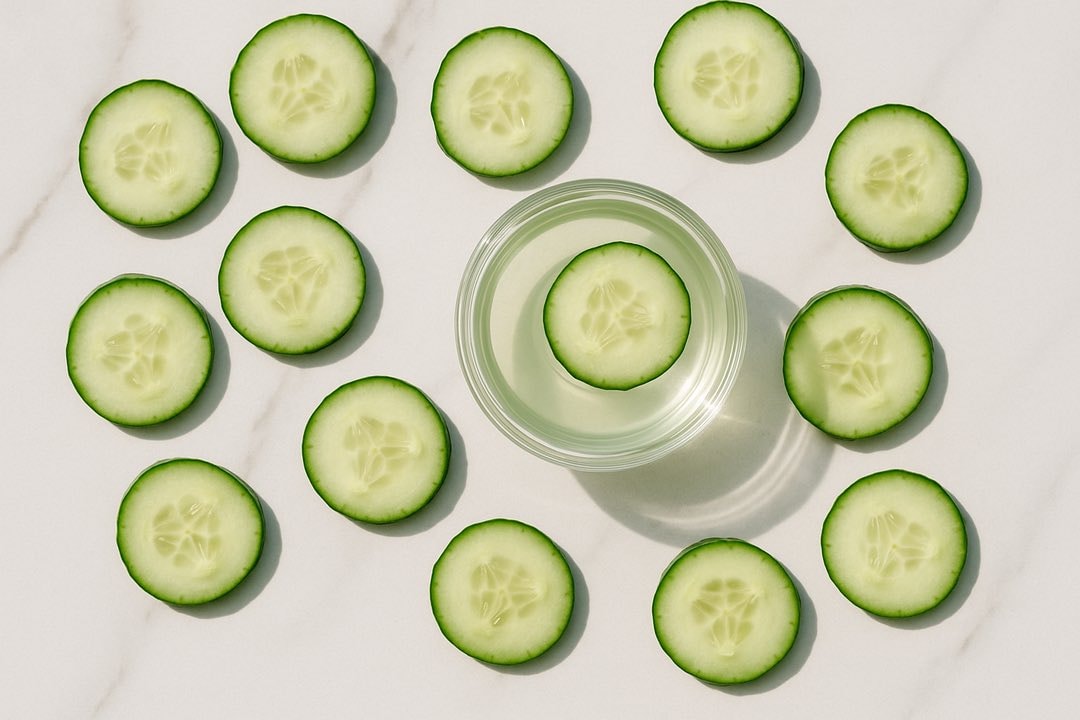
How to Choose the Right Natural Ingredients for Your Skin Type
After years of trial and error, I've learned that choosing ingredients isn't just about knowing your skin type – it's about understanding your skin's current needs, which can change with seasons, stress, and age.
Start with your primary concern: Don't try to address everything at once. If acne is your biggest issue, focus on tea tree oil, niacinamide, and green tea. If aging concerns you most, prioritize vitamin C, bakuchiol, and rosehip oil.
Consider your skin's sensitivity level: Even if you have oily skin, you might be sensitive to certain actives. I have oily skin but it's also reactive, so I choose gentle versions of oil-controlling ingredients (like alcohol-free witch hazel instead of harsh astringents).
Think about texture preferences: Some people love oils; others prefer gels or serums. A jojoba oil and an aloe vera gel can both hydrate, but the experience is completely different. Choose textures you'll actually enjoy using consistently.
Account for your climate: In humid summers, I use lighter ingredients like aloe and green tea. In dry winters, I reach for shea butter and rosehip oil. Your skin's needs shift with weather.
Read beyond the label claims: A product might say "for all skin types," but if it's loaded with coconut oil and you're acne-prone, it's not for you. Learn to read ingredient lists, not just marketing.
Listen to your skin: This is crucial. Your skin will tell you if something's working. Tightness, redness, increased breakouts, or that uncomfortable feeling means something isn't right. Trust your skin's feedback over product promises.

Mixing Natural with Active Ingredients: Dos and Don'ts
Here's where things get nuanced. Natural ingredients are active ingredients – they contain biologically active compounds. But some combinations work beautifully together while others can irritate or deactivate each other.
✅ DO Combine:
Vitamin C + Sunscreen: This is a powerhouse morning combo. Vitamin C boosts sunscreen efficacy by neutralizing free radicals that penetrate through SPF.
Niacinamide + Almost Anything: Niacinamide plays well with most ingredients. I use it with vitamin C (despite old myths about conflict), aloe vera, hyaluronic acid, and even bakuchiol.
Aloe Vera + Retinoids (or Bakuchiol): Aloe soothes potential irritation from these actives. When I started bakuchiol, I layered aloe underneath to be extra gentle.
Green Tea + Vitamin C: Both antioxidants that work synergistically for protection and brightening.
Jojoba Oil + Water-Based Serums: Use water-based serums (like hyaluronic acid) first, then seal with jojoba oil. This layering technique locks in hydration.
❌ DON'T Combine (or Be Very Careful):
AHAs + Retinol: Both are exfoliants that can irritate and dry skin when used together. They can also deactivate each other. If you want both, use AHAs in the morning and retinol at night, or alternate nights.
Vitamin C + Benzoyl Peroxide: Benzoyl peroxide can oxidize vitamin C, making it ineffective. Use vitamin C in the morning and benzoyl peroxide at night.
Multiple Essential Oils: Layering several essential oils increases irritation risk. Stick to one at a time, properly diluted.
Undiluted Apple Cider Vinegar + Anything: ACV is too acidic (pH ~3) and has caused chemical burns when used straight. If you use it, heavily dilute (at least 1:4 with water) and be cautious.
Pro tip: When in doubt, separate actives by time of day or alternate days. Morning routine can focus on antioxidants and protection (vitamin C, green tea, sunscreen). Evening routine can focus on renewal (bakuchiol, rosehip oil).
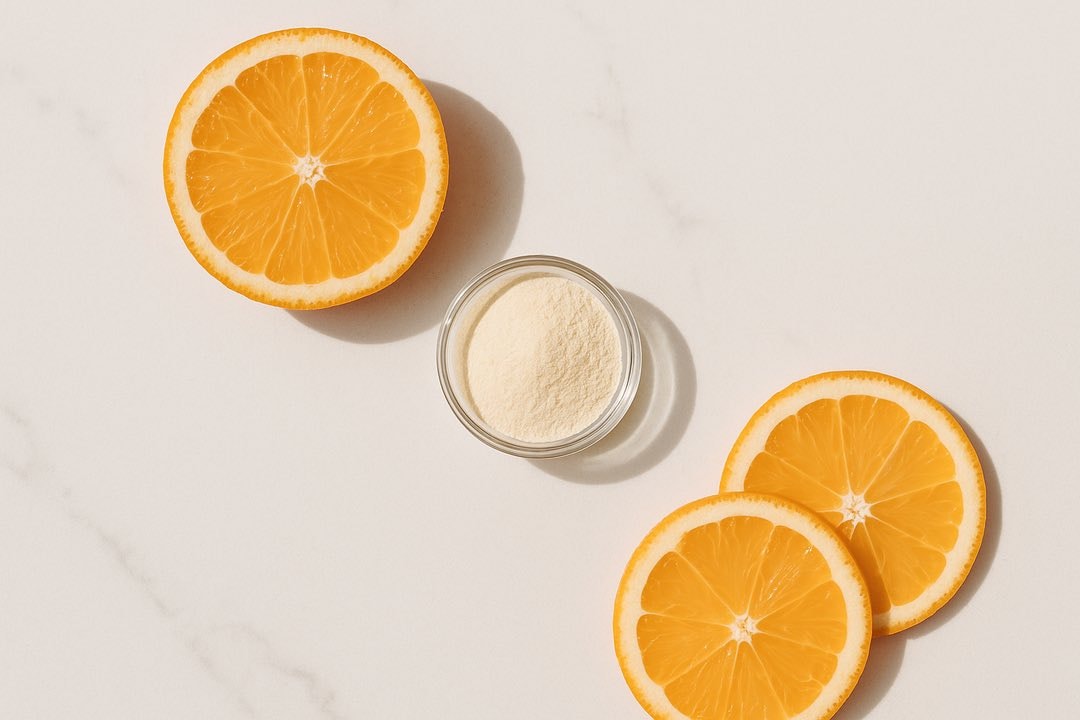
Holistic Skin Health: Maintaining Healthy Skin
Here's what I've learned: even the best natural ingredients can't overcome poor lifestyle habits. Skin health is inside-out as much as it's outside-in.
Maintain a Consistent Skin Care Routine Consistency beats perfection. I'd rather you use a simple routine of cleanser, moisturizer, and sunscreen every single day than have a 10-step routine you only do occasionally.
Make it easy enough that you'll actually do it. For me, that means keeping my routine to 4-6 products maximum per session.
Have a Skin-Loving Diet After cleaning up my diet, I noticed improvements in my skin within weeks. I focus on:
-
Antioxidant-rich foods: Berries, dark leafy greens, green tea
-
Omega-3 fatty acids: Salmon, walnuts, flaxseeds (for skin barrier health)
-
Probiotic foods: Yogurt, kefir, sauerkraut (gut health shows up on skin)
-
Plenty of water: I aim for 8 glasses daily to flush toxins and maintain hydration
I've also reduced sugar and dairy, which for me personally triggered breakouts.
Get Enough Sleep Sleep deprivation triggers the body to produce excess cortisol and inflammation. When I consistently get 7-8 hours, my skin looks brighter, plumper, and breakouts heal faster.
If I'm struggling to sleep, I tire myself out with evening exercise or use natural remedies like chamomile tea or magnesium supplements.
Manage Stress Stress shows up on my face immediately – breakouts, dullness, and increased sensitivity. I've incorporated:
-
Daily meditation (even just 10 minutes)
-
Regular exercise
-
Time in nature
-
Saying no to commitments that drain me
Your skin reflects your internal state. Managing stress isn't just about mental health – it's skincare.
Protect From Sun Daily This is non-negotiable. UV exposure continuously creates damage that undermines every other skincare effort. I wear SPF 30+ every single day (UVA penetrates windows).
Exercise Regularly Exercise increases blood flow, delivering oxygen and nutrients to skin cells. It also helps flush cellular debris. After a good workout, my skin always looks more vibrant.
The Bottom Line: Switching to natural skin care is an excellent decision, but it works best as part of a holistic approach. Your skin is an organ that reflects your overall health. Nourish it from inside and out.
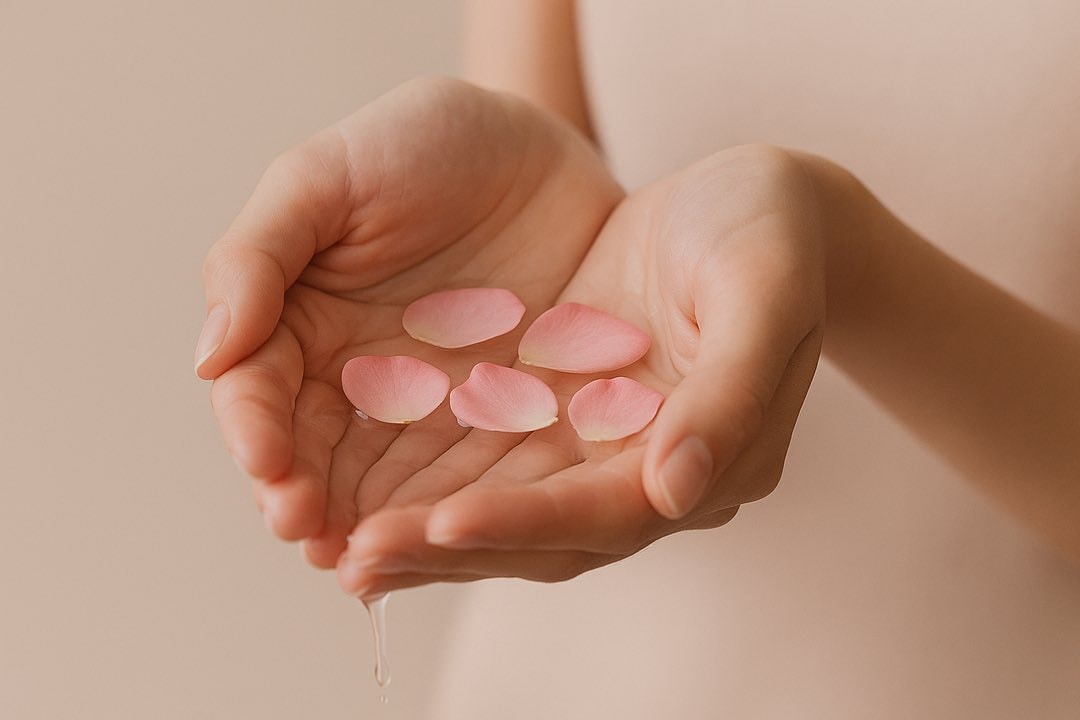
Final Thoughts
Switching to natural skin care has been one of the best decisions for my skin health. The journey taught me to be more mindful about what I put on my body, to trust ingredients with evidence behind them, and to listen to my skin's unique needs.
You don't have to overhaul your entire routine overnight. Start with one natural ingredient that addresses your primary concern. Give it time to work. Pay attention to how your skin responds. Build from there.
Remember: the "best" natural ingredient is the one that works for your specific skin type and concerns. What transformed my skin might not be what transforms yours – and that's okay. This is about finding what makes your skin healthy, comfortable, and radiant.
Frequently Asked Questions
How Can I Improve My Skin Quality Naturally?
Start with proven natural ingredients for your specific concerns (refer to the skin type sections above). But don't stop there. Skin quality improves dramatically when you: Clean up your diet: Focus on whole foods, healthy fats, and plenty of water; Get consistent, quality sleep: Aim for 7-8 hours nightly; Manage stress: Through meditation, exercise, or whatever works for you
What Is the Best Natural Thing to Put on Skin?
There's no single "best" – it depends entirely on your skin type and concerns. If I had to choose one universally beneficial ingredient, it would be jojoba oil. Its structure mimics human sebum, making it suitable for dry, oily, combination, and sensitive skin. It hydrates, balances, heals, and rarely causes reactions.
What Are the Only 4 Ingredients That Work in Skin Care?
Experts say that the big four in skin care ingredients are retinoids, vitamin C, niacinamide and AHAs with strongest scientific evidence. However, this list is evolving. Research now validates many natural ingredients: Tea tree oil for acne (comparable to benzoyl peroxide); Bakuchiol for anti-aging (comparable to retinol); Colloidal oatmeal for eczema (FDA-recognized); Manuka honey for wound healing (FDA-approved). Many ingredients work; they just need proper research backing.
Can I Mix Natural Ingredients With Other Active Ingredients?
Yes, absolutely – with caution. Natural ingredients are active ingredients, so you're really asking about combining different actives. Safe combinations I use: Vitamin C (morning) + sunscreen; Niacinamide + vitamin C; Aloe vera + bakuchiol; Green tea extract + hyaluronic acid; Jojoba oil over water-based serums. Combinations to avoid or separate: AHAs + retinoids (can over-exfoliate and irritate); Vitamin C + benzoyl peroxide (can oxidize vitamin C); Multiple strong essential oils (increases irritation risk)
Is “Chemical-Free” Skin Care Possible?
No, and this is a pet peeve of mine. Everything is made of chemicals – water is a chemical (H₂O), aloe vera contains chemicals, even air is chemicals. "Chemical-free" is scientifically meaningless and often used in marketing to play on fears. Focus on "evidence-based" and "safe" rather than getting hung up on "chemical-free."
Are There Any Certifications to Look For?
Certain cosmetic safety regulations and certifications can indicate that a skin care line is of high quality. For example, EWG has been checking products since 1993 to confirm chemical safety and call out harmful chemicals for parents and consumers. USDA Organic: For products with ≥95% organic ingredients; COSMOS/ECOCERT: European organic and natural cosmetic certifications with strict standards, and others













